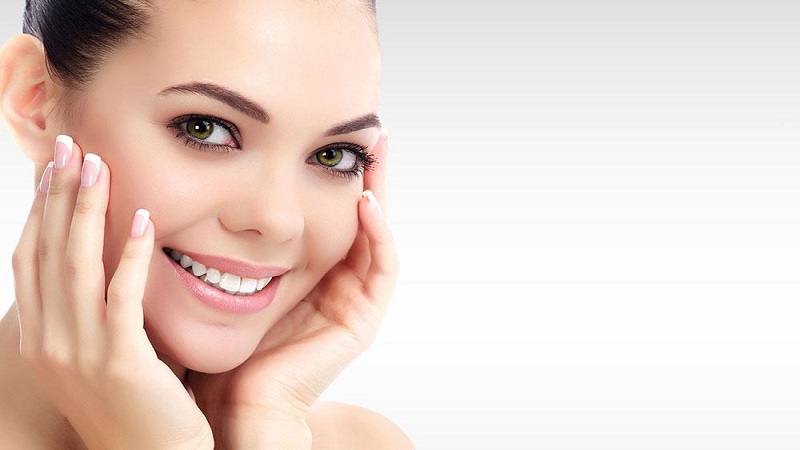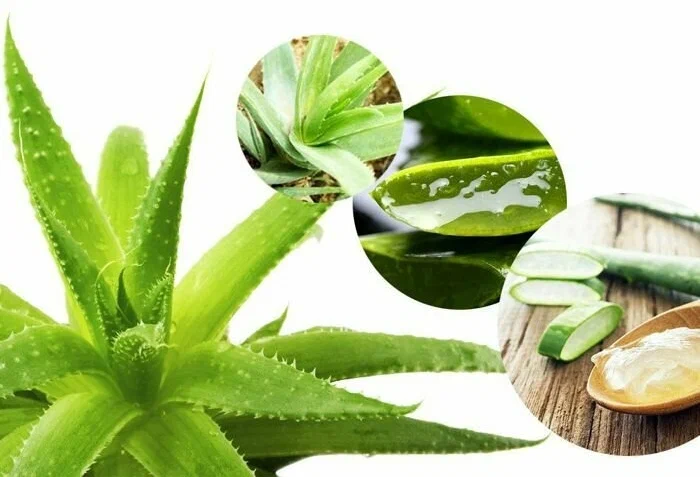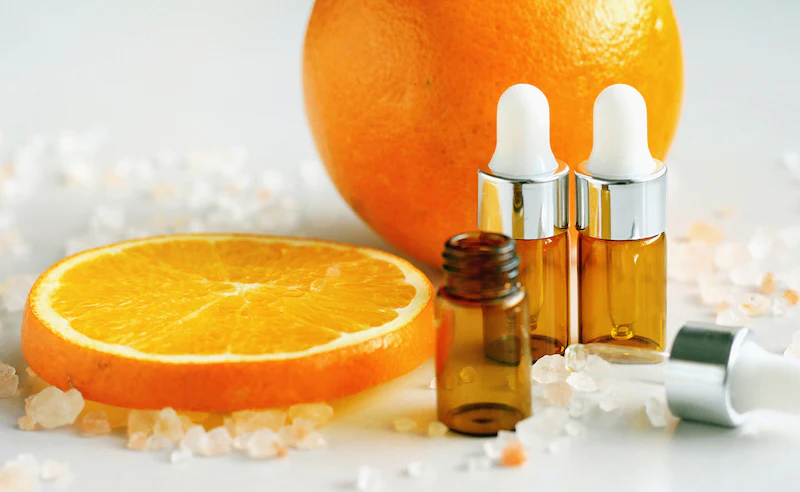Are you ready to embark on a journey to luminous, glowing and brighten skin? You’re not alone in this quest. The desire for brighter, more radiant skin has taken the beauty world by storm, and for good reason.
A bright complexion can make you look healthier, more youthful, and give you that coveted “lit from within” glow. But with so much information out there, it’s easy to get lost in a sea of products and promises. Don’t worry we’ve got you covered.
This comprehensive guide will walk you through everything you need to know about brightening your skin, from understanding the science behind skin brightness to creating a personalized routine that’ll have you glowing in no time.
Understanding Skin Brightness: More Than Skin Deep
Before we dive into the how to, let’s get to the root of what actually determines skin brightness. It’s not just about slapping on a magic cream and hoping for the best – there’s real science behind that glow.

What Determines Brighten Skin?
Your skin’s brightness is influenced by several factors:
- Melanin production: This pigment gives your skin its color. More melanin = darker skin.
- Cell turnover rate: How quickly your skin sheds dead cells and replaces them with fresh ones.
- Blood circulation: Good circulation brings oxygen and nutrients to your skin cells.
- Hydration levels: Well hydrated skin reflects light better, appearing brighter.
- Skin texture: Smooth skin reflects light more evenly, looking brighter.
Common Culprits Behind Dull Skin
If your skin’s looking a bit lackluster, these might be the reasons:
- Sun damage: UV rays can cause hyperpigmentation and uneven skin tone.
- Dehydration: Dry skin can look dull and flaky.
- Poor circulation: Reduced blood flow means less oxygen and nutrients reaching your skin.
- Buildup of dead skin cells: This can make your skin look rough and dull.
- Environmental pollutants: These can clog pores and create a barrier on your skin.
- Lack of sleep: Your skin repairs itself while you snooze – skimp on sleep, and it shows.
- Stress: Chronic stress can lead to inflammation and accelerated aging.
The Skin’s Natural Renewal Process
Your skin is constantly renewing itself, shedding old cells and creating new ones. This process, called desquamation, takes about 28 days in young adults but slows down as we age.
Supporting this natural renewal process is key to maintaining bright, healthy looking skin.
The Good, The Bad, and The Ugly: Skin Brightening Methods
Now that we understand what affects skin brightness, let’s explore the various methods to achieve that glow.
Not all brightening treatments are created equal some are backed by science, while others might do more harm than good.
Over the Counter Heroes
These easily accessible products can be your first line of defense against dull skin:
- Vitamin C serums: A powerful antioxidant that inhibits melanin production and boosts collagen.
- AHA/BHA exfoliants: Alpha and beta hydroxy acids help slough off dead skin cells.
- Niacinamide: Reduces inflammation and evens out skin tone.
- Kojic acid: Derived from mushrooms, it’s known for its skin lightening properties.
- Licorice extract: Contains glabridin, which inhibits tyrosinase, an enzyme involved in pigment production.
Prescription Powerhouses
For more stubborn cases, your dermatologist might recommend:
- Hydroquinone: A potent skin lightening agent (use only under medical supervision).
- Tretinoin: A form of vitamin A that speeds up cell turnover.
- Azelaic acid: Reduces inflammation and pigmentation.
Natural Remedies: Fact vs. Fiction
While many natural remedies are touted as skin brighteners, not all are backed by science. Here’s a quick rundown:
| Ingredient | Effectiveness | Scientific Backing |
| Lemon juice | Moderate | Limited studies, potential for irritation |
| Turmeric | Promising | Some studies show anti inflammatory benefits |
| Aloe vera | Mild | May help with hyperpigmentation |
| Yogurt | Mild | Contains lactic acid, a gentle exfoliant |
| Green tea | Promising | Antioxidant properties well documented |
Procedures That Pack a Punch
For those seeking more dramatic results, professional treatments can be a game changer:
- Chemical peels: Remove the top layer of skin to reveal brighter skin underneath.
- Microdermabrasion: Physically exfoliates the skin’s surface.
- Laser treatments: Target pigmentation and stimulate collagen production.
- Microneedling: Creates tiny punctures in the skin to boost collagen and allow better product absorption.
The Dark Side: Harmful Practices to Avoid
Beware of these potentially dangerous brightening methods:
- Mercury containing creams: Highly toxic and illegal in many countries.
- Excessive exfoliation: Can damage your skin barrier and lead to irritation.
- Unregulated or counterfeit products: May contain harmful ingredients.
- DIY treatments with harsh ingredients: Can cause chemical burns or allergic reactions.
Your Personalized Glow Up Game Plan
Now that we’ve covered the basics, it’s time to create a routine that’ll work for you. Remember, consistency is key when it comes to skincare.
Determining Your Skin Type and Concerns
First things first – know your skin:
- Oily: Shiny, prone to breakouts
- Dry: Flaky, tight feeling
- Combination: Oily T zone, dry cheeks
- Sensitive: Easily irritated, prone to redness
- Normal: Well balanced, few concerns
Identify your main concerns: Is it dark spots, overall dullness, or uneven texture?
Building a Solid Skincare Routine
Here’s a basic routine to get you started:
- Cleanse: Use a gentle, pH balanced cleanser.
- Tone (optional): Look for alcohol free formulas with brightening ingredients.
- Treat: Apply your brightening serum or spot treatment.
- Moisturize: Lock in hydration with a suitable moisturizer.
- Protect: Always finish with SPF during the day.
Pro tip: Introduce new products one at a time to see how your skin reacts.
Diet and Lifestyle: Your Skin’s Secret Weapons
What you put in your body is just as important as what you put on your skin:
- Eat the rainbow: Colorful fruits and veggies are packed with skin loving antioxidants.
- Stay hydrated: Aim for at least 8 glasses of water a day.
- Limit sugar and processed foods: They can contribute to inflammation and premature aging.
- Consider supplements: Omega 3s and collagen peptides may support skin health.
Stress and Sleep: The Underrated Glow Getters
Never underestimate the power of a good night’s sleep and stress management:
- Aim for 7-9 hours of quality sleep each night.
- Practice stress reduction techniques like meditation or yoga.
- Exercise regularly to boost circulation and reduce stress.
Ingredient Spotlight: The Science of Shine
Let’s dive deeper into the star players in the brightening game:
Vitamin C: The Brightening MVP
Vitamin C is a powerhouse antioxidant that:
- Inhibits melanin production
- Boosts collagen synthesis
- Protects against free radical damage
How to use: Apply in the morning under sunscreen for maximum protection.
Retinoids: The Cellular Multitaskers
Retinoids, derived from vitamin A, are known for:
- Speeding up cell turnover
- Reducing fine lines and wrinkles
- Evening out skin tone
How to use: Start with a low concentration and use at night, as retinoids can increase sun sensitivity.
AHAs and BHAs: Exfoliation Nation
Alpha and beta hydroxy acids are chemical exfoliants that:
- Remove dead skin cells
- Unclog pores
- Improve skin texture
How to use: Start with once or twice a week, gradually increasing frequency as tolerated.
Niacinamide: The Do It All Darling
This form of vitamin B3 is a true multitasker:
- Reduces inflammation
- Regulates sebum production
- Improves skin barrier function
How to use: Can be used morning and night, plays well with other ingredients.
Cutting Edge Brighteners: What’s New and Promising?
Keep an eye out for these up and coming ingredients:
- Tranexamic acid: Shows promise in treating melasma and hyperpigmentation
- Bakuchiol: A gentler, plant based alternative to retinol
- Alpha arbutin: A safer alternative to hydroquinone
DIY Brightening: Home Remedies That Actually Work
For those who love a good DIY, here are some kitchen ingredients that have some scientific backing:
- Honey mask: Natural humectant with antibacterial properties
- Yogurt and turmeric pack: Gentle exfoliation plus anti inflammatory benefits
- Green tea compress: Soothing and packed with antioxidants
- Papaya enzyme mask: Contains papain, a natural exfoliant
Remember: Always patch test before applying anything new to your face!
Beyond the Face: Holistic Approaches to Radiant Skin
Brightening your skin isn’t just about what you put on it – it’s about overall health and wellness.
The Gut Skin Connection
Emerging research suggests a strong link between gut health and skin health. Consider:
- Incorporating probiotic rich foods like yogurt and kefir
- Adding prebiotic fiber to feed your good gut bacteria
- Limiting inflammatory foods like processed sugars and excessive dairy
Hydration Habits for a Healthy Glow
Proper hydration is crucial for bright, plump skin:
- Drink water throughout the day
- Eat water rich foods like cucumbers and watermelon
- Use a humidifier in dry environments
Exercise: Your Skin’s Personal Trainer
Regular exercise benefits your skin by:
- Boosting circulation
- Reducing stress
- Promoting better sleep
Aim for at least 30 minutes of moderate exercise most days of the week.
Patience is a Virtue: Setting Realistic Expectations
Rome wasn’t built in a day, and neither is glowing skin. Here’s what to expect:
- Timeline for visible results: Most people see improvements in 4-6 weeks, but significant changes may take 3-6 months.
- Consistency is key: Stick to your routine, even when you don’t see immediate results.
- When to reassess: If you don’t see any improvements after 3 months, it might be time to tweak your routine or consult a dermatologist.
Special Considerations
Brightening for Different Skin Tones
Darker skin tones are more prone to hyperpigmentation and require special care:
- Look for gentle, non irritating formulas
- Be extra diligent with sun protection
- Consider treatments specifically formulated for melanin rich skin
Addressing Hyperpigmentation and Age Spots
For stubborn dark spots:
- Use targeted spot treatments with ingredients like kojic acid or vitamin C
- Consider professional treatments like chemical peels or laser therapy
- Be patient fading dark spots can take time
Seasonal Changes and Your Brightening Routine
Adjust your brighten skin routine with the seasons:
- Summer: Focus on sun protection and lightweight hydration
- Winter: Amp up moisturization and gentle exfoliation
Combining Treatments: What Plays Well Together?
Some ingredient combinations can boost effectiveness, while others can cause irritation. Here’s a quick guide:
| Good Combinations | Avoid Mixing |
| Vitamin C + Vitamin E | Retinoids + AHAs |
| Niacinamide + Hyaluronic Acid | Vitamin C + Benzoyl Peroxide |
| AHAs + BHAs | Multiple potent actives at once |
The Future of Skin Brightening
The world of skincare is constantly evolving. Here’s what to watch for:
- DNA based skincare: Personalized routines based on your genetic profile
- Microbiome focused products: Targeting your skin’s unique bacterial ecosystem
- Sustainable and ethical sourcing: More brands focusing on environmentally friendly ingredients and practices.
FAQs
- Q: How long does it take to see results from skin brightening treatments? A: Most people notice improvements in 4-6 weeks, with significant changes in 3-6 months.
- Q: Can I use vitamin C and retinol together? A: It’s best to use vitamin C in the morning and retinol at night to avoid potential irritation.
- Q: Is it safe to use skin brightening products during pregnancy? A: Many ingredients aren’t pregnancy safe. Always consult your doctor before using any new skincare products.
- Q: Can skin brightening treatments work on all skin tones? A: Yes, but different skin tones may require different approaches. Consult a dermatologist for personalized advice.
- Q: How often should I exfoliate for brighter skin? A: Start with 1-2 times a week and gradually increase as tolerated, but don’t exceed 3-4 times weekly.
Conclusion: Embracing Your Glow Journey
Brightening your skin is a journey, not a destination. It requires patience, consistency, and a holistic approach. Remember, healthy skin is beautiful skin, so focus on nourishing your body from the inside out. Embrace your unique skin tone and texture while working towards your brightest, most radiant complexion.
By understanding the science behind skin brightness, choosing the right ingredients and treatments, and adopting healthy lifestyle habits, you’re well on your way to unlocking your skin’s natural radiance. So go ahead, give your skin the TLC it deserves, and watch it glow!



